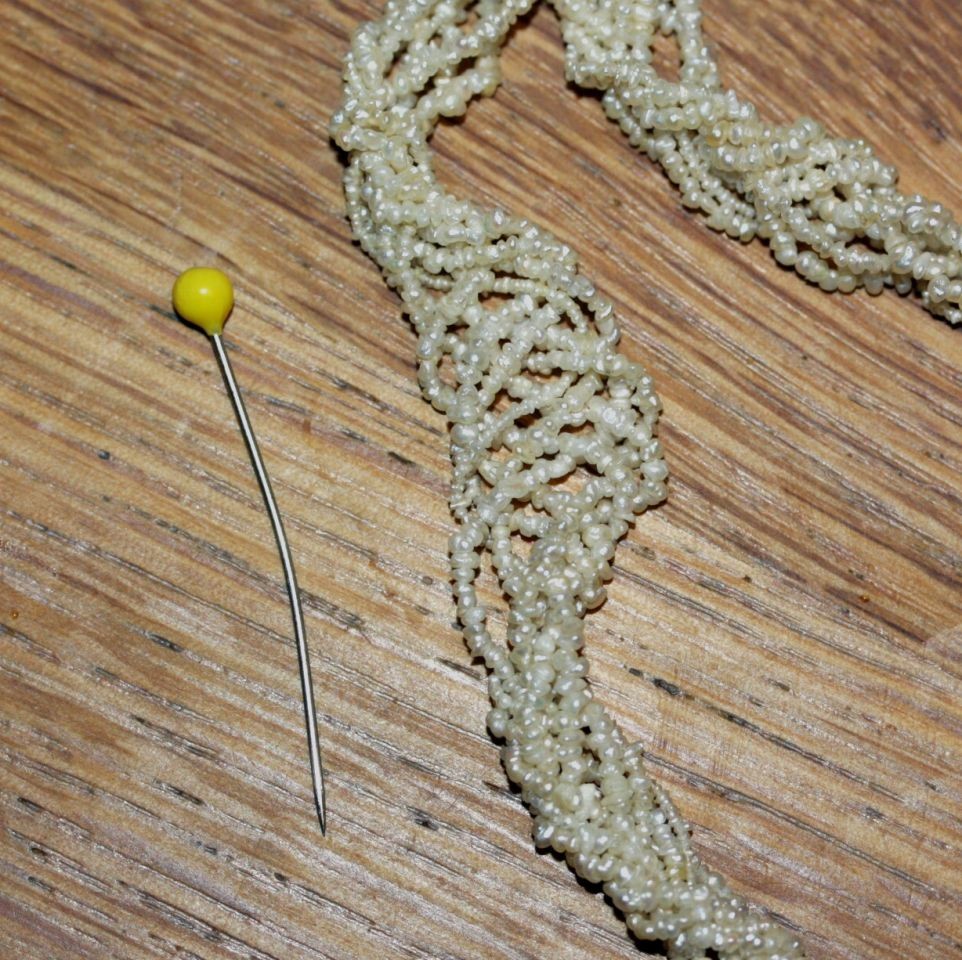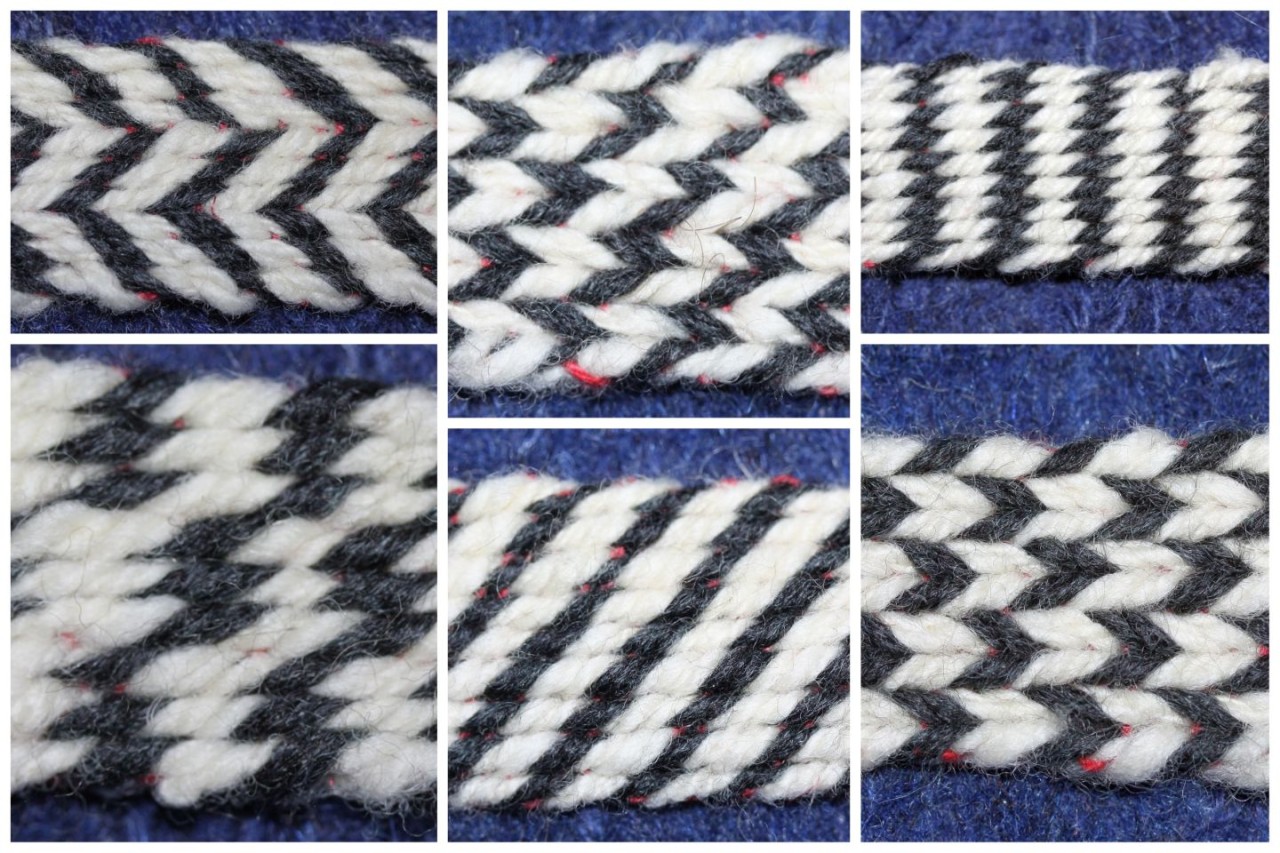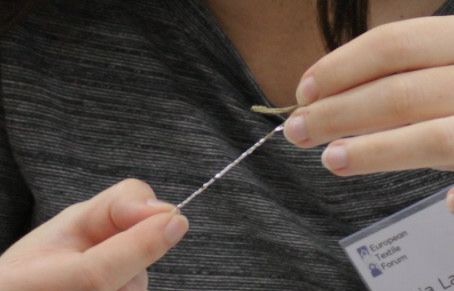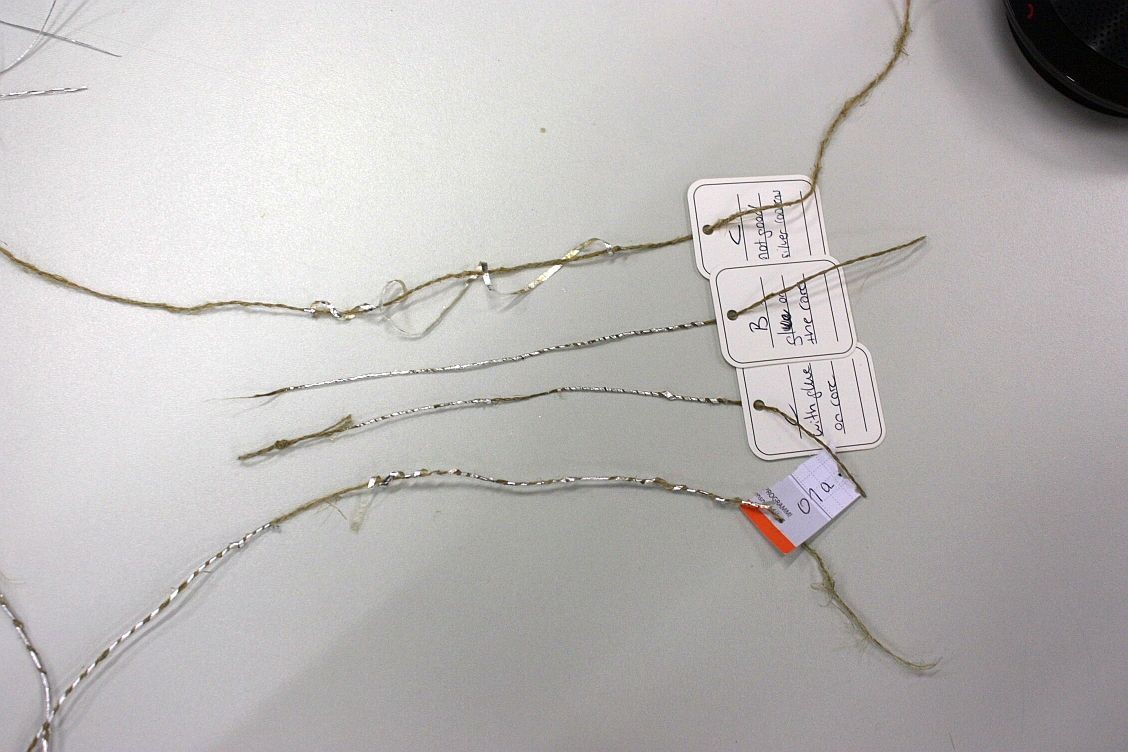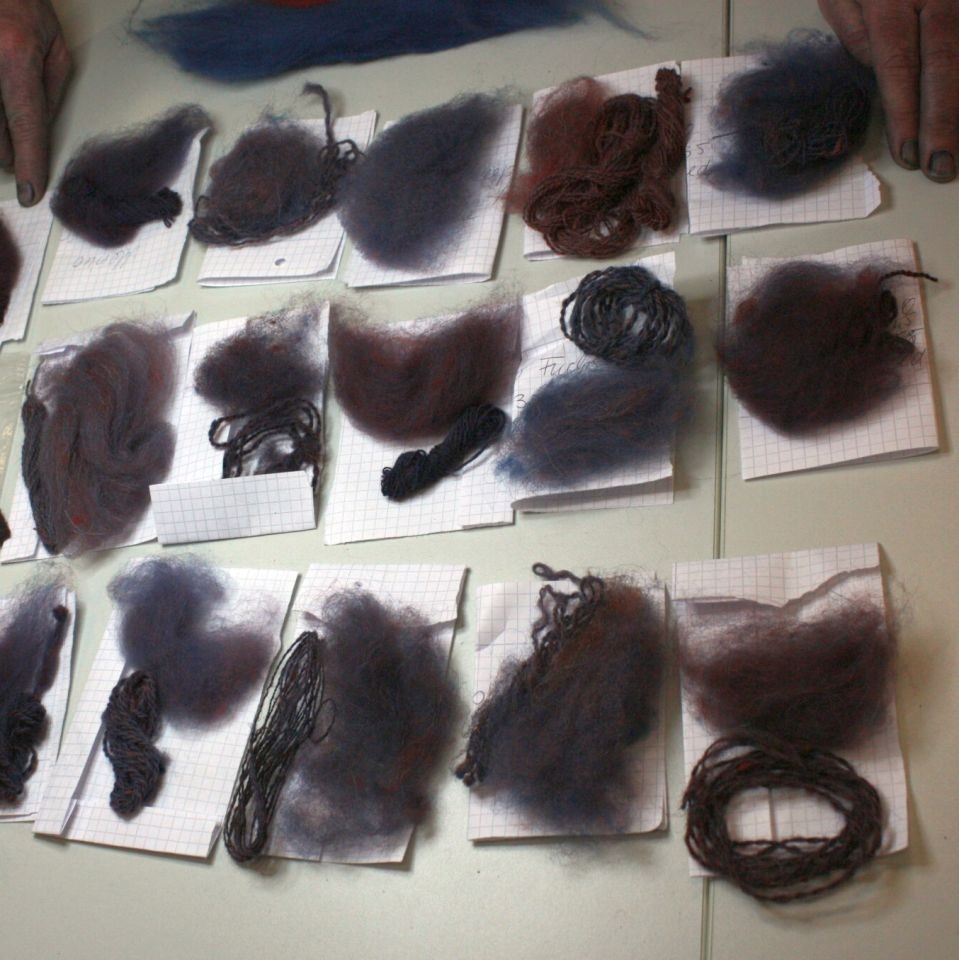Sometimes it really is amazing what you learn as a, well, let's call it "collateral" when looking for something, or researching stuff.
For instance... one thing I learned today is that it's amazingly hard and time-consuming to taper down a 0.5 mm diameter beech rod at both ends. Why would I want to do this, you ask? The answer is, of course, related to the Textile Forum - it's to fake an old Peruanian spindle (which you can find described on this page, scroll down a bit), with the laughable weight of up to 5 grams. I have glass beads to serve as whorls which fit perfectly, but of course the spindle itself needs to be the right shape.
So I went at it with an electrical drill, sand paper, and various sharp wood-working instruments. Combined with my very mediocre skills at wood-working, it went... tediously. I have to finish tapering down my first try, as one end is still way too thick, and depending on how that goes, I might have another go at it with a different tool, and a different process, but let's say that it is by far not as easy as I had assumed. (Nothing new here, though. My experience, which I am of course not always taking hints from, is that most things that you'd guess to be straight-forward, easy, and quick to do, aren't.)
Another thing I learned yesterday is that goldbeater's skin, which is a bovine membrane, is the outer layer of the bovine appendix. (I knew it came from the appendix, but not that it was the outer layer only. I had wondered, since the bovine appendices you can buy for use in making sausage products make for a very thick casing, but goldbeater's skin is very thin.) The membranes, for gold-beating purposes, are dried and probably treated similarly to parchment (sources vary on that). For use in gold-beating, they are then covered with a special kind of plaster, which is beaten in, and then they are used for about 70 times - afterwards, they are too brittle for gold-beating and get discarded, or re-used for other purposes.
Among those is the use in musical instruments, as in a kind of "bird-flute", I've been told. Might making gold thread also be one of them? That is on the list of things to possibly find out. It would at least be a very fitting second use of the skins, and if you're going to buy your leaf gold or leaf silver or leaf gilt-silver (the most common type, saving some on the pricey gold), you could pick up the membrane at the same time. Provided, of course, that it has not become too brittle, or that the plaster inhibits use for gilding the membrane, or that the pieces are too small for getting gilded and then cut up into strips and then wound around a thread core. Ah. So many things that are lost to the passage of time.
By the way, if you're buying the skin today, it's quite pricey. Which is not new, because back in 1952, when a gold-beater got paid 65 Pfennig for an hour's worth of work, a skin cost 1 Mark (which is 100 Pfennig, for those of you not familiar with the old German currency units). There's fewer sources for the skin these days, though, as the modern variation is a kind of plastic.
Fascinating, all that stuff, right?




